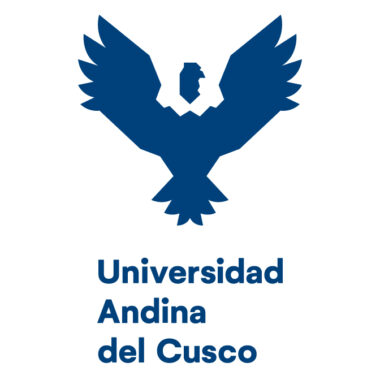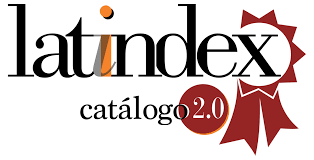Architectural intervention of the Limonal-Manu control and access post for the Limonal interpretation center
Architectural intervention of the Limonal-Manu control and access post for the Limonal interpretation center
DOI:
https://doi.org/10.36881/yachay.v10i1.269Keywords:
Control, Limonal, Manu, Intervención, centro de interpretaciónAbstract
The present investigation developed an evaluation and proposal of solutions to the problems of the infrastructure given in the Limonal Control Post, which works as the access, registration and control infrastructure of the Manu National Park, which also contributes to the surveillance of flora and fauna and basic education for visitors, the main objective being to improve the provision of services provided in this infrastructure. Using the analytical-deductive method, the deficiencies in the current infrastructure in the space, form, function and energy components were found to optimize the performance of activities and the provision of services. Research is defined as APPLICATION, where different proposals were put into practice based on the application of technological and scientific knowledge. The project was carried out in agreement with the Vice-Rectorate for Research of the Andean University of Cusco, the Zoological Society of Frankfurt and the National Service of Protected Areas SERNANP, the intervention area being 100m2 at the Limonal Control Post, located in the lower basin of the Manu river, the results show greater efficiency in the provision of surveillance and control services, increased energy supply, improved bioclimatic comfort and improved educational service, some criteria being used as the basis for improving the habitability, energy and construction conditions of the jungle.
Downloads
References
Almeida, A. (23 de enero de 2009). Ludicidade como instrumento pedagógico. Obtenido de https://www.cdof.com.br/recrea22.htm
Cosme, A. M. (2018). El proyecto de arquitectura: Concepto, proceso y representación. Barcelona: Reverte.
Giraldo, W., & Herrera, C. A. (2017). Ventilación pasiva y confort térmico en vivienda de interés social en clima ecuatorial. Ingeniería y desarrollo, 35(1), 77-101. Obtenido de http://www.scielo.org.co/pdf/inde/v35n1/2145-9371-inde-35-01-00077.pdf DOI: https://doi.org/10.14482/inde.35.1.8944
Glinka, M. E.-V.-P. (2005). Reducción del Impacto Ambiental a partir de Estrategias de Reciclaje y Reutilización de Residuos Sólidos Provenientes de la Demolición de Edificios. Comunicaciones Científicas y tecnológicas. Universidad Nacional del Nordeste, Argentina. . Obtenido de https://s3.amazonaws.com/academia.edu.documents/49535300/T-037.pdf?response-content-disposition=inline%3B%20filename%3DReduccion_del_Impacto_Ambiental_a_partir.pdf&X-Amz-Algorithm=AWS4-HMAC-SHA256&X-Amz-Credential=ASIATUSBJ6BAFJ3YNCPO%2F20200524%2Fus-east
Merleau-Ponty, M. &. (1975). Fenomenología de la percepción. (E. Uranga, Trad.) Barcelona.
Ministerio de Educación del Perú/Plan Selva. (Agosto de 2016). PLan Selva. ARKINKA(249), 28. Recuperado el 2018, de http://www.iccgsa.com/assets/noticias-pdf/e7a1d-plan-selva-infraestructura-educativa-en-la-amazonia-peruana.pdf
Neufert, E. (2013). Neufert Arte de proyectar en arquitectura. Barcelona: Gustavo Gili. DOI: https://doi.org/10.1007/978-3-8348-2247-5
Orosco Uscamayta, E. y Bravo Gonzales, D. Y. (2019). “Investigación científica y responsabilidad social universitaria para la conservación de la biodiversidad del sur oriente Perú: Centro de Interpretación Ambiental de Limonal, Parque Nacional del Manu”. Presentación en Power Point. Programa de Investigación Científica para el Desarrollo Sostenible. Vicerrectorado de Investigación de la Universidad Andina del Cusco.
Perales, J. A. (2014). De los Objetivos del Milenio al desarrollo sostenible: Naciones Unidas y las metas globales post-2015. Anuario Ceipaz(7), 49-84.
Piñol, C. M. (2009). Los centros de Interpretación:urgencia o moda. Her&Mus. Heritage & Museography(01), 50-59. Obtenido de https://www.raco.cat/index.php/Hermus/article/view/314655 [Consulta: 24-05-2020].
Villaseñor Alonso. I., Z. M. (2012). Del patrimonio cultural inmaterial o la patrimonialización de la cultura. Cultura y representaciones sociales, 6(12), 75-101. Obtenido de http://www.scielo.org.mx/scielo.php?pid=S2007-81102012000100003&script=sci_arttext
Additional Files
Published
How to Cite
Issue
Section
License
You are free to:
- Share — copy and redistribute the material in any medium or format
- Adapt — remix, transform, and build upon the material
- The licensor cannot revoke these freedoms as long as you follow the license terms.
Under the following terms:
-
Attribution — You must give appropriate credit, provide a link to the license, and indicate if changes were made. You may do so in any reasonable manner, but not in any way that suggests the licensor endorses you or your use.















